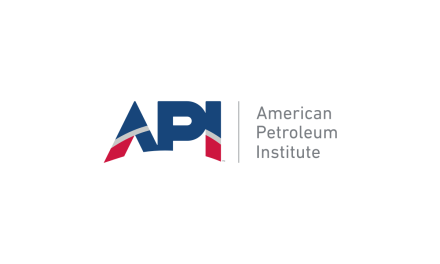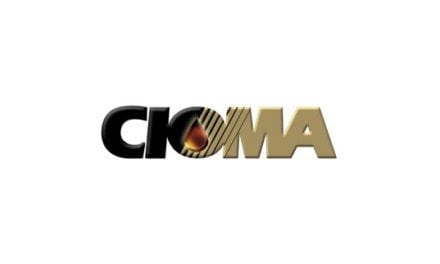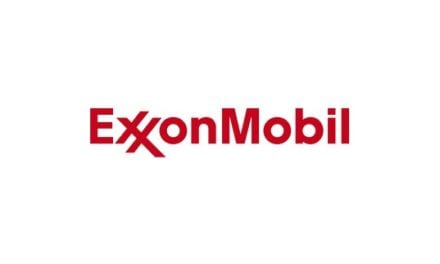U.S. Oil Stocks Rebounding
- U.S. supply adds half of recent inventory drop in three weeks
- Bearish price outlook continues
- U.S. production reacting to lower bread-even prices
- Natural gas storage 11% lower than last year
 Sincerely,
Alan Levine, Chairman of Powerhouse
Sincerely,
Alan Levine, Chairman of Powerhouse

The Matrix
Commercial stocks of crude oil and products in the United States topped out at a record 1.374 billion barrels in August 2016. Subsequently, volumes fell, reaching 1.331 billion barrels a month ago—a loss of 43 million barrels. This decline has not signaled the end of bloated supply. In only three weeks, total stocks have rebounded, gaining more than half of the total shrink since August, 2016.

The gain is consistent with the bearish price tone that has been growing in recent weeks. There is hardly any bullish price evidence to be seen. Supply and demand statistics are contributing to expectations of softer prices ahead.
Shale oil activity in the United States continues to add to supply. Data for the week ending June 9, 2017, showed production at 9.330 million barrels per day. This is near recent highs, and reflects drillers improved efficiencies, lower break-even prices and growth in new oil rigs. The active rig count has more than doubled since May 2016, pointing to further growth in output into 2018.
West Texas Intermediate (WTI) prices are flirting with $44. They have lost about $6 since May 25. Current thinking is that shale oil break-even prices cannot be far below. This could slow new investment in shale drilling and ultimately support WTI prices going forward. One analyst concedes that some plays in the Permian Basin will still expand, but expects any rate of growth to slow.
Technically, price charts show support at $43.76. If broken, $42.20 could be seen, and then $39.19. Even a move to $40 might not seriously impede output, especially in the Permian Basin. Compared with other U.S. producing areas, the Permian reportedly has the lowest break-even costs. Equipment and investment capital are pouring into the region. With such advantages, continued robust output seems inevitable.
Supply/Demand Balances
Supply/demand data in the United States for the week ending June 9, 2017, were released by the Energy Information Administration (EIA).
Total commercial stocks of petroleum increased 6.8 million barrels during the week ending June 9, 2017.
Builds were reported in stocks of gasoline, fuel ethanol, distillates, residual fuel, propane and other oils. A draw was reported in stocks of K-jet fuel.
Commercial crude oil supplies in the United States decreased to 511.5 million barrels, a draw of 1.7 million barrels.
Crude oil supplies increased in two of the five PAD Districts. PAD District 1 (East Coast) crude oil stocks rose 0.4 million barrels and PADD 5 (West Coast) stocks expanded 0.6 million barrels. PADD District 2 (Gulf Coast) crude oil stocks declined 1.4 million barrels, and PADD 3 (Gulf Coast) crude stocks fell 1.3 million barrels. PAD District 4 (Rockies) crude oil stocks were unchanged from the previous report week.
Cushing, Oklahoma, inventories decreased 1.2 million barrels from the previous report week to 62.2 million barrels.
Domestic crude oil production increased 12,000 barrels daily to 9.330 million barrels per day.
Crude oil imports averaged 8.025 million barrels per day, a daily decrease of 316,000 barrels. Exports rose 165,000 barrels daily to 0.722 million barrels per day.
Refineries used 94.4% of capacity, an increase of 0.3 percentage points from the previous report week.
Crude oil inputs to refineries increased 29,000 barrels daily. There were 17.256 million barrels per day of crude oil run to facilities. Gross inputs, which include blending stocks, rose 55,000 barrels daily to 17.572 million barrels daily.
Total petroleum product inventories saw an increase of 8.5 million barrels from the previous report week.
Gasoline stocks increased 2.1 million barrels; total stocks are 242.4 million barrels.
Demand for gasoline fell 48,000 barrels per day to 9.269 million barrels daily.
Total product demand increased 174,000 barrels daily to 19.514 million barrels per day.
Distillate fuel oil supply grew 0.3 million barrels to 151.4 million barrels. National distillate demand was reported at 4.045 million barrels per day during the report week. This was a weekly increase of 540,000 barrels daily.
Propane stocks rose 2.4 million barrels; total stocks are 52.8 million barrels. Current demand is estimated at 786,000 barrels per day, a decrease of 44,000 barrels daily from the previous report week.
Natural Gas
According to the EIA:
Net injections into storage totaled 78 Bcf for the week ending June 9, compared with the five-year (2012 – 2016) average net injection of 87 Bcf and last year’s net injections of 68 Bcf during the same week. With the exception of last week, most of the recent storage weeks have had net injections lower than the five-year average.
Working gas levels are 11% lower than last year’s record levels, and 9% higher than the five-year average. Working gas stocks total 2,709 Bcf, which is 228 Bcf more than the five-year average and 322 Bcf less than last year at this time.
The Department of Energy (DOE) has approved exports from the Delfin LNG project. Delfin is located offshore Louisiana. It will be allowed to liquify and export up to 1.8 Bcf of liquified natural gas (LNG) daily to countries without free trade agreements (FTA) with the U.S. (Delfin has had a similar approval for export to FTA countries since 2014).
Futures trading involves significant risk and is not suitable for everyone. Transactions in securities futures, commodity and index futures and options on future markets carry a high degree of risk. The amount of initial margin is small relative to the value of the futures contract, meaning that transactions are heavily “leveraged.” A relatively small market movement will have a proportionately larger impact on the funds you have deposited or will have to deposit—this may work against you as well as for you. You may sustain a total loss of initial margin funds and any additional funds deposited with the clearing firm to maintain your position. If the market moves against your position or margin levels are increased, you may be called upon to pay substantial additional funds on short notice to maintain your position. If you fail to comply with a request for additional funds within the time prescribed, your position may be liquidated at a loss and you will be liable for any resulting deficit. Past performance may not be indicative of future results. This is not an offer to invest in any investment program.
Powerhouse is a registered affiliate of Coquest, Inc.
Was this helpful? We’d like your feedback.
Please respond to [email protected].
Copyright © 2017 Powerhouse, All rights reserved.









